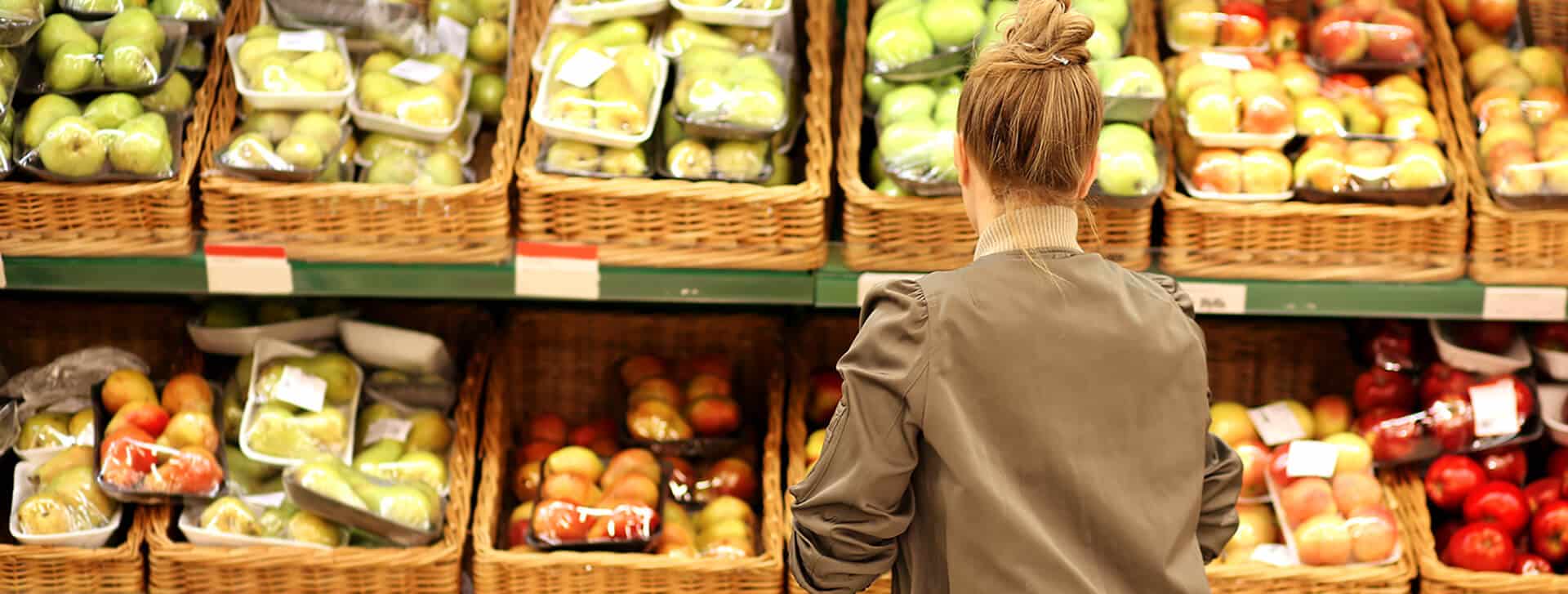How to Start Food Budgeting

If you have a taste for the finer foods in life, you already know that managing the cost of groceries can be tough.
But food expenses don’t have to eat through your monthly budget. With a little bit of planning and thriftiness, you can keep food costs in check while still satisfying your cravings and your nutritional needs. Budgeting better for food purchases can also help you save more money to put towards other financial goals. Learn more financial advice from our other blog posts.
Planning meals ahead of time can be a great option to save money long-term. You can find out exactly what you need so you don’t waste money on extra food. Doing this is a great first step, and being prepared means you’re less likely to spend money on fast food or other last-minute meals.
1. Buy seasonal produce.
Fresh fruits, vegetables and herbs are more affordable when you buy them in season. Check the U.S. Department of Agriculture’s Seasonal Produce Guide for guidelines, or use SeasonalFoodGuide.org to see which items are growing now in your area.
2. Stock up on affordable pantry staples.
Shelf-stable pantry staples aren’t just convenient—they’re often even cheaper than their fresh counterparts. Canned vegetables, beans, and proteins like chicken and fish provide both ease and affordability. To save even more money, and to cut back on sodium, use dry beans instead of canned beans.
These staples can make great sides that go with a variety of dishes, and they’re affordable too!
3.Make friends with the freezer aisle.
If you struggle to finish all your fresh fruit and veggies before they go bad, the freezer aisle offers a budget-friendly solution. Stock up on frozen fruits and vegetables so that your favorites are always within reach. You’ll save money and avoid the guilt of throwing spoiled produce in the trash.
4. Buy in bulk.
If your family goes through pounds of rice, pasta or other dry staples every week, think beyond pre-packaged foods and walk back to the bulk section. It’s generally a better deal to buy in bulk than it is to purchase in smaller quantities, especially for items you use often, from grains, nuts and cereal to paper goods, like toilet paper and paper towels.
Only do this if you have plans for the food in qusetion or if it has a long shelf life. Typically when buying in bulk you do pay more for the food up front, but the price per unit of that food is lower. However, it’s not always worth it i the food goes bad because there is too much of it.
5. Be savvy with coupons.
Gather coupons from newspaper ads, store mailers and email promotions. Some grocery stores have their own shopping apps where you can gather digital coupons. While you’re at the store, the USDA recommends watching for deals right in front of you, like peel-off coupons on packages and coupons set up along the aisles.
There are also couponing apps available to help you check available deals online. SIgn up for coupons with your nearest grocery store or check out this article from Nerd Wallet that lists 7 great couponing apps.
6. Compare your options.
Don’t just reach for the first package you see. The Academy of Nutrition and Dietetics suggests checking unit prices or prices per serving—these numbers can help you determine which item is really the best deal. In general, generic items are cheaper than name brands.
Your grocery trips may take a little longer as you start comparing your options and gathering coupons, but by following these tips, you’ll create smart shopping habits that can save you money in the long run.

